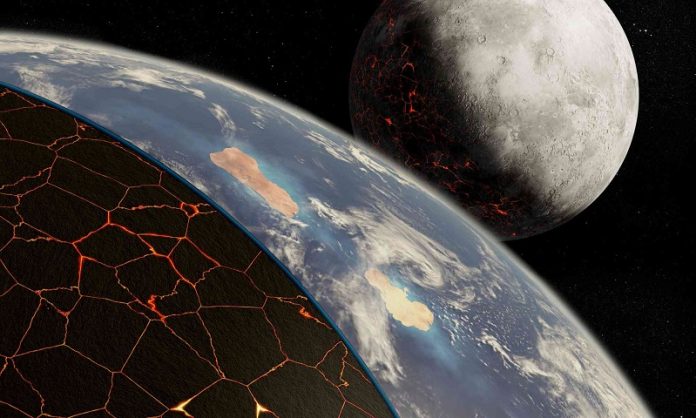
Have you ever wondered how life began on our planet?
We might have thought we had it all figured out, but some recent discoveries have tossed previous assumptions out the window.
A group of scientists led by John Tarduno, a professor at the University of Rochester, made an exciting discovery that could reshape how we think about the early Earth and the origin of life.
They found out that plate tectonics, the movement of huge slabs of Earth’s crust, weren’t happening when life first began around 3.9 billion years ago.
This is a big deal because until now, most scientists believed that plate tectonics played a crucial role in creating the conditions necessary for life.
In their study, published in the scientific journal Nature, the researchers used tiny mineral crystals called zircons to understand what was happening on Earth billions of years ago.
Zircons are like tiny time capsules, holding within them a record of Earth’s magnetic field when they were formed.
By studying the magnetic properties of these zircons, the scientists could figure out if Earth’s crust was moving around at that time, which is a hallmark of plate tectonics.
But, to their surprise, they found no evidence of plate tectonics from about 3.9 to 3.4 billion years ago.
Instead, they concluded that Earth was getting rid of excess heat from its interior through cracks in its surface, a process called stagnant lid tectonics. This new understanding suggests that plate tectonics might not be a requirement for life to start on similar planets in the universe.
You might be wondering: “What’s the difference between plate tectonics and stagnant lid tectonics?” Well, plate tectonics involves huge chunks of Earth’s crust moving around horizontally, like giant puzzle pieces shifting on the surface. On the other hand, stagnant lid tectonics is more about the crust cracking as the Earth cools, allowing heat to escape from the planet’s interior.
Even though stagnant lid tectonics is less efficient at getting rid of heat than plate tectonics, it still made early Earth lively and dynamic. Professor Tarduno explained that Earth’s surface was far from dead, and the conditions were just right for life to kick-start.
However, it’s also essential to remember that while stagnant lid tectonics can start life, plate tectonics might be crucial for maintaining it.
Tarduno says that plate tectonics, which probably started after about 3.4 billion years ago, play a vital role in keeping Earth habitable by efficiently removing heat, maintaining the magnetic field, and ensuring the right conditions for life to thrive.
So, next time you’re thinking about the marvel of life on Earth or dreaming about life on distant planets, remember it’s not all about moving plates. Sometimes, a stagnant lid does the trick!
Follow us on Twitter for more articles about this topic.



